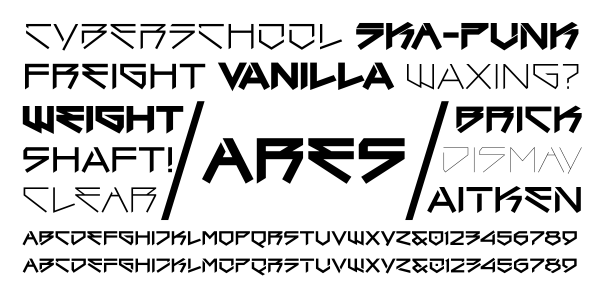
Ares
Adam Jagosz
- c2019
- bŻywiec
- hFonts
. . .
Unlike most existing Blackletter typefaces, AJ Quadrata does not imitate a historical Textura font, but rather the handwriting style that came before. OpenType features make it possible for the letters to change form in context. The aim of AJ Quadrata is to reproduce the Textura Quadrata hand more faithfully than ever by utilizing the technological advance that happened since first Blackletter fonts were designed and crafted back in the 15th century. Besides an accurate digitization of the Textura Hand, AJ Quadrata also includes an imitated Blackletter Cyrillic, Greek and Armenian. The typeface is delivered in two flavors. The default cut is a modern take on textura quadrata that can be useful for today and tomorrow. The standard ligatures feature employs nearly all letters. The tittle of i retains its original, hasty squiggle form (except for the Turkish localization). Discretionary ligatures include medieval ligatures da, de, do, pa, pe, po (and their mixed-case counterparts!). Stylistic sets allow to use historic letter variants such as long s and rotunda r, closed-counter a, and alternate capitals. AJ Quadrata Medieval is perfect for setting medieval Latin. It sports an uncial H, an angular form of O, and an F with descender, forms that were prevalent in historical source texts. The squiggles above i only appear for disamibiguation nearby m, n, u, as in original manuscripts. Discretionary ligatures and historic variants are promoted to the standard ligatures feature to make room in the discretionary ligatures feature for a variety of scribal abbreviations. Dedicated stylistic sets include medieval punctuation and justification alternates — glyphs with elongated terminals used for lengthening lines that end up too short. Both flavors of the typeface feature two versions of E: the round form is default for the Latin, but the angular was chosen for the Cyrillic to accommodate the Ukrainian language that also uses a separate letter Є.